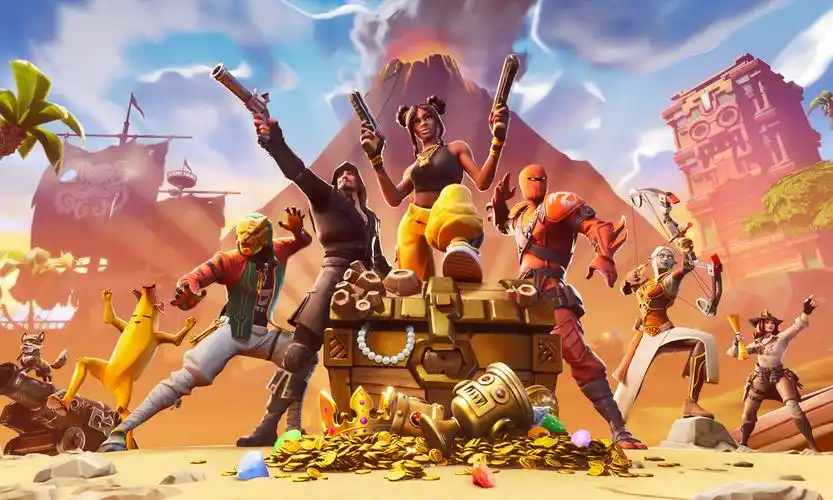Deep Game News: Insider Secrets Revealed
The gaming industry, a multi-billion dollar behemoth, thrives on a delicate balance of dazzling marketing campaigns and closely guarded development secrets. For the average player, the journey from a game's conception to its arrival on your console is a black box. But what really happens behind the polished trailers and curated press releases? This article pulls back the curtain to reveal the insider secrets that shape the games we love and love to hate.
The Art of the Vertical Slice: A Calculated Illusion
Before a game gets the green light for full production, developers must often create a "Vertical Slice." This is a small, highly polished segment of the game, usually just a few minutes long, designed to showcase the final vision. The secret? This slice is often a complete fabrication.
It’s built with resources and code that are not scalable for the full game. The stunning lighting, the flawless AI, the seamless loading—it’s a target render disguised as gameplay. The goal is to secure funding and publisher approval. The immense pressure then falls on the development team to somehow make the entire game live up to this idealized, and often unattainable, demo. This practice explains why some games' final releases can look noticeably different from their initial, mind-blowing reveals.
The Crunch Culture: The Human Cost of Your Game
While awareness is growing, the pervasive reality of "crunch culture" remains the industry's darkest open secret. Months before a major release, it's not uncommon for developers to be mandated to work 60, 80, or even 100-hour weeks. This isn't passion-driven overtime; it's often a mandatory, unpaid, and exhausting sprint to meet an immovable launch date.
These dates are frequently set by marketing and publishing departments to hit fiscal quarters or avoid competition, with little regard for the development team's well-being. The result is burnout, mental health crises, and high industry turnover. The polished experience you enjoy at launch is often a product of immense human sacrifice, a cost that is deliberately hidden from public view.
The Data-Driven Design Dilemma
Gone are the days when game design was purely an artistic endeavor. Today, a game's core mechanics are increasingly shaped by data analysts and monetization experts. Large publishers employ sophisticated telemetry: they collect vast amounts of data on how players behave.
They know where you die most often, what items you ignore, and exactly when you might get frustrated and quit. While this can be used for good—like rebalancing a frustrating difficulty spike—it is more often used to optimize for player retention and spending. The placement of a microtransaction store, the timing of a "special offer" pop-up, and the grindiness of a free-to-play game are not accidents. They are meticulously crafted psychological traps based on your data, designed to maximize engagement and revenue.
The "Content" vs. "Game" Rift
Insiders often distinguish between "content" and the actual "game." The "game" is the core engine, the physics, the AI, the fundamental loops that make it fun. "Content" is the stuff built on top: levels, character models, missions, and story.
Many development nightmares occur when a studio spends years perfecting the "game" but runs out of time to build enough "content." This leads to rushed, repetitive, or cut features. Conversely, some projects start with a wealth of "content" ideas but are built on a shaky, untested "game" foundation, leading to a beautiful but broken experience. Understanding this rift explains why some games feel incredibly polished but shallow, while others are buggy yet contain glimpses of genius.
The Influencer Economy: Sponsored Hype
You watch your favorite streamer raving about a new game on launch day. Their excitement feels genuine. But what you might not see is the contract that obligated them to create a certain number of positive videos during the crucial first week of launch, often with strict guidelines on what bugs or issues they are not allowed to mention.
These sponsored deals, often worth six or seven figures, are a standard part of marketing budgets. Embargoes are another tool; reviewers receive games early but are forbidden from publishing their reviews until a set time, usually just before launch. This limits the spread of negative impressions that could impact day-one sales. The early review ecosystem is less about critical journalism and more a controlled part of the hype machine.
The Myth of the "Day-One Patch"
The phrase "Day-One Patch" is presented as a helpful fix for last-minute bugs. The insider truth is more cynical. This practice has become a crutch for releasing physically unfinished games.
Developers are forced to hit a "Gold Master" date—when the game must be copied to discs and shipped. Knowing they have weeks before most players get the disc home, they will ship a broken, often unplayable version on the disc to meet the deadline. The "Day-One Patch," sometimes tens of gigabytes large, is the actual finished game. This allows publishers to adhere to strict retail deadlines while offloading the completion of the game to the players' internet bandwidth.
The Future: Cloud Gaming and the Ownership Erosion
The next big secret the industry doesn't want you to focus on is the end of ownership. The push towards subscription services and cloud gaming isn't just about convenience; it's about ultimate control.
When you stream a game, you own nothing. Publishers can alter or remove content at any time. They can rebalance gameplay based on new data overnight. They can completely remove a game from the service, making it inaccessible. This model kills the second-hand market and gives companies perpetual control over the product and the player. The convenience comes at the cost of surrendering your rights as a consumer.

In conclusion, the video game industry is a complex web of art, technology, and cutthroat business. The magic doesn't happen by accident; it's manufactured through a process filled with both brilliant innovation and troubling practices. As players, becoming more informed consumers allows us to better critique the industry, support ethical developers, and ultimately demand a better, more sustainable future for the art form we all cherish. The game is not just on your screen; it's also in the boardrooms and development studios, and knowing the rules is the first step to winning.


















